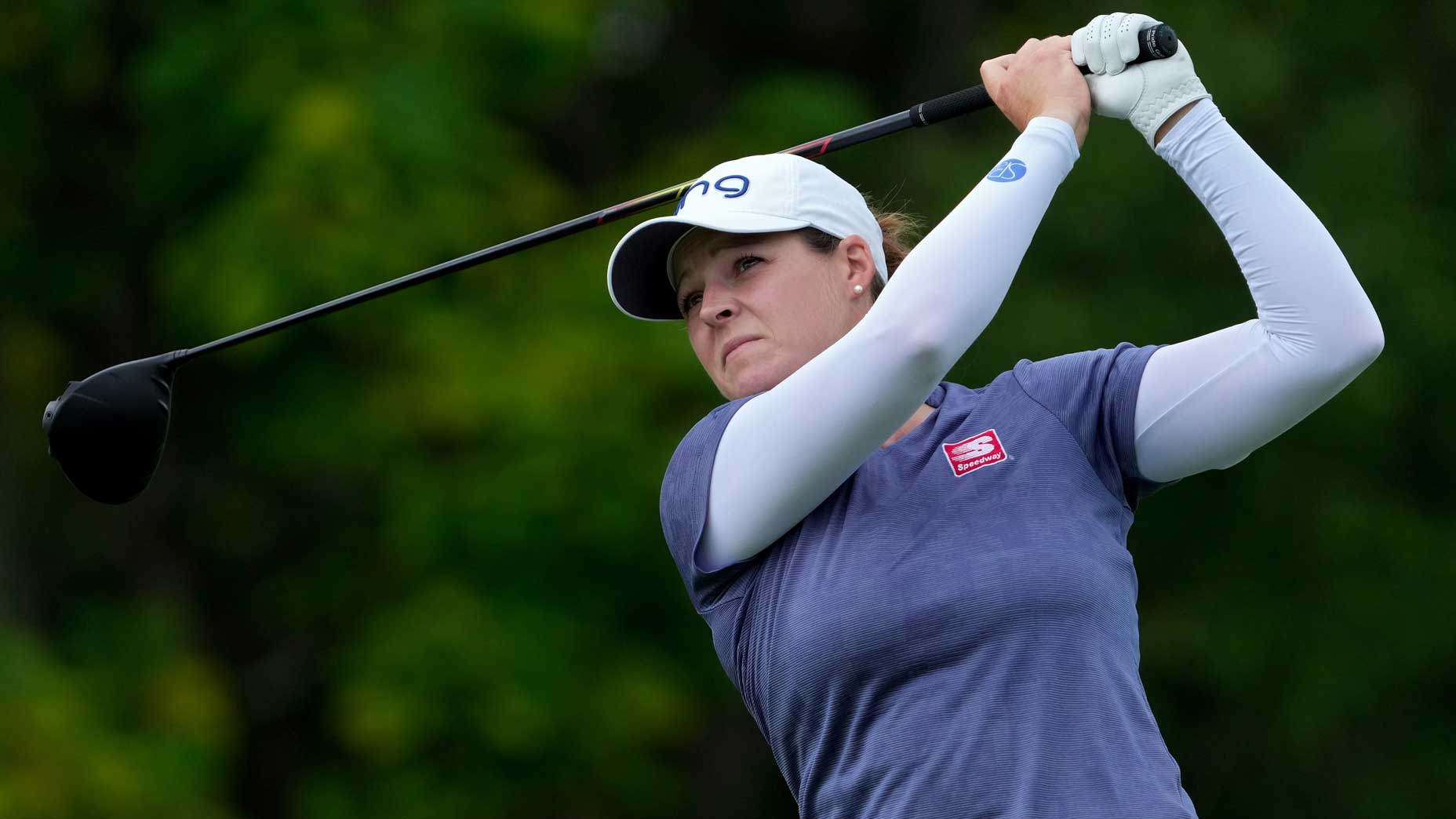As a Functional Golf Specialist and Pilates instructor who happens to be married to a PGA golf pro, I’ve helped thousands of golfers achieve their golf fitness goals. My husband Steve always says that the golfer is almost always limited in achieving their golf goals due to a lack of physical ability. When I assess a golfer, I look at their movement in all three planes of motion and apply functional, core-based movement to address any deficits.
My goal in my Pilates for golfers classes is to make sure my students can move, live, and play injury-free. The golf swing is a complex, dynamic, 3-D movement that requires a tremendous amount of control.
Posture is extremely important. I’ve come up with a concept called the “ABCs of Pilates” — Alignment, Breathing and Core, designed just for golfers. With low back pain being a top complaint in the U.S., nearly every golfer that I have worked with has had issues with the lumbar spine, whether it is soft-tissue pain or disc issues. So with that in mind, I make sure my golfers have a Pilates workout that encompasses the core, feet and ankles, front and side body, and a focus on stability.
Why are Pilates exercises good for golfers?
We are highly sedentary people. Without a movement program that offsets all of this sitting, the body, being so adaptive, will stay in the sitting posture, even when standing. Thus, when the sedentary golfer goes out and starts playing, injury usually follows.
I tried Pilates to help my back and golf game, here’s what I learnedBy: James Colgan
Functional Pilates for Golf can help the golfer maintain the spine angle at address, which is essential to efficiently load and rotate through the backswing, harness the power of the core at impact as well successfully maintain balance through the finish. An inability to effectively maintain the spine angle throughout the swing puts a tremendous amount of force on the lower back and neck.
When we apply Pilates moves, we are offsetting sitting and preparing the body to play golf with more precision, power and accuracy. Here are my five specially-selected moves to try.
Bridge
This common movement is performed on the Reformer by tilting the pelvis posteriorly to flex the lumbar spine, one vertebra at a time to a high bridge position. Then, soften the sternum and roll the spine back down to the carriage, beginning with the thoracic spine.
This is a great exercise to open the front of the body and to work on hip stability. It also works the glutes and hamstrings, which are important for a strong athletic stance.
Twist Sitting on Short Box
Torso Rotation with a stable lower body is crucial for golf. In this movement, the hips are fixed but the torso is rotating, following a similar movement that you would in the swing.
Side Arm Series (especially Twist and Side Bends, aka mermaid)
This is performed either sitting or kneeling (more advanced) on the Reformer sideways. The arms are in a big circle holding the straps while rotating the torso.
Mermaids lengthen and strengthen the side body. When the side body is less stiff, the other planes move better too, which promotes proper golf form.

Supine Arms in Straps or mid-back series (Lower Lift, the well-known Pilates Hundreds, and/or the Oblique Press)
Supine Arms in Straps is performed by lying supine on the Reformer carriage, with the pelvis and spine neutral. The legs are in tabletop position. One hand is in the loop with an open hand grip. Your shoulder is flexed to 90 degrees.
Cross the arm over the torso while simultaneously flexing and rotating the spine and extending the legs. Complete repetitions, and then complete on the other side.
These movements combine core stability and breathing and are great for abdominal strength. Lots of golfers end up with back pain due to weak abdominal muscles. Building core strength will help to avoid any back pain and also will help with overall performance.
Eve’s Lunge/Single Thigh Stretch
One can perform this stretch with one foot on the reformer, and the other down on the floor so you get a really good quad and hip flexor stretch.
Keep the spine stable and hips as level as possible. Press back leg against the shoulder block of the Reformer while bending knee of front standing leg, feeling stretch in the hip flexors of back leg. Maintain gluteus maximus engagement in the back leg to keep the pelvis pulled forward and to avoid extending the lumbar spine. To increase stretch, lift the inside arm up toward the ceiling and hold for 30 seconds.
You can also extend the front leg to get more of a hamstring stretch. For golfers, getting a good stretch in these regions is super important.
Shannon Willits is a master Pilates instructor for Club Pilates, a Fellow of Applied Functional Science (FAFS), and a certified Functional Golf Specialist with the Gray Institute. To learn more, click here.











